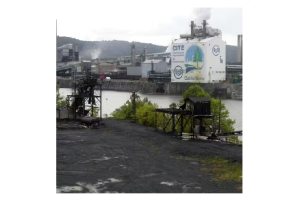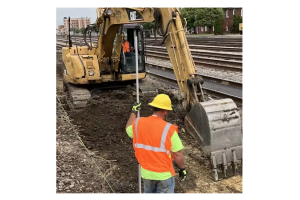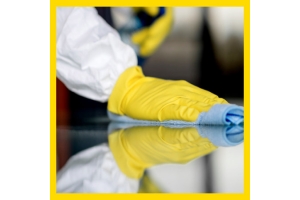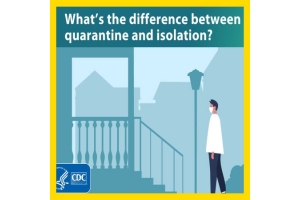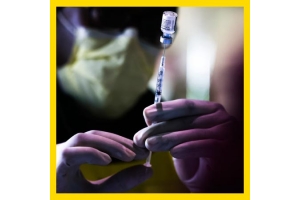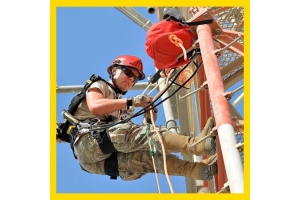-
September 01, 2025Workplace Safety Market to Reach $44 Billion by 2031
Growth drivers include well-being, regulatory frameworks and AI-driven safety solutions, says new survey.
Organizations worldwide prioritizing occupational health, risk management, and compliance are responsible for a predicted CAGR of 13.50% growth in the safety market from 2024 to 20131, according to a new report published by Verified Market Research, released on August 18.
In 2024, the market was valued at $16.12 billion and is expected to reach $44.39 billion by the end of the forecast period.
Companies across industries, including construction, manufacturing and mining, are adopting smart technologies like IoT-enabled wearables, and AI-driven monitoring.
The report provides details on the market drivers.
Stringent Government Regulations and Compliance Standards -
September 01, 2025US Steel Plant Where 2 Died Has Previous Safety Issues
"This should not have happened and potentially could have been prevented," said Sylvia Johnson of the US Chemical and Safety Investigation Board.
As a result of the explosion on August 11 at the U.S. Steel Clairton Coke Works plant in Clairton, about 15 miles outside of Pittsburgh, two people are dead and 10 others are injured.
Of those injured, five are in critical but stable condition and five have been treated and released from the hospital, according to officials, as reported by ABC News.
The explosion occurred in the battery operating area at the plant was reported at 10:51 a.m., and "multiple secondary explosions" were reported after that, Allegheny County officials said.
Sponsored Recommendations
Fitting in Fast: Making a Safe Workplace for New Hires -
August 18, 2025America's Safest Companies: Sevan Multi-Site Solutions, Inc.
The veteran-owned construction company believes that true leadership is setting ever higher goals, not merely waiting for regulations to catch up.
Editor's Note: The 2025 class of America's Safety Companies will be recognized Tuesday, October 21, during the Safety Leadership Conference 2025 in Glendale, Ariz. More information about the conference, including registration, can be found at www.safetyleadershipconference.com.
Sevan Multi-Site Solutions, Inc.
Commercial Building Construction
Downers Grove, IL
371 employees | 2 domestic Sites | 5 EHS professionals
Safety compliance sets the floor, not the ceiling, at Sevan Multi-Site Solutions. In addition to aligning with the ANSI/ASSP Z10 framework, Sevan’s safety management system incorporates numerous best practices that exceed regulatory requirements.
-
August 18, 2025
America's Safest Companies 2025: Mangan Inc.
Mangan proves that even in highly hazardous and difficult environments, there's always a way to work safely.
Editor's Note: The 2025 class of America's Safety Companies will be recognized Tuesday, October 21, during the Safety Leadership Conference 2025 in Glendale, Ariz. More information about the conference, including registration, can be found at www.safetyleadershipconference.com.
Oil & gas, pipeline, manufacturing, biopharma
The company created a program that encourages employees to share reflections and observations of their work environments as well as suggestions for improvement; the program’s name itself, SMART Card, was chosen by employees.
Mary Gurasich, senior safety program manager at Mangan, says the SMART Card program engages employees at a personal level and encourages them to think critically about their environment, document potential hazards and take ownership of their safety decisions. -
July 28, 2025Sleepless Over Safety: The Hidden Toll of Workplace Incidents and How to Address It
"When incidents keep happening because the setup never changes or the controls are outdated, the pressure builds," says James Smith CEO of A-Safe.
Safety leadership in industrial settings is demanding by nature. For many professionals in this field, the responsibility does not end with the shift. Even when everything seems in order, incidents—near misses, disrupted workflows and equipment concerns—remain front of mind. That persistent concern, to health and safety managers often invisible to others, carries consequences beyond operations. It affects well-being, mental clarity, and the ability to rest outside of the working environment.
When incidents keep happening because the setup never changes or the controls are outdated, the pressure builds. It is not only compliance at stake, but -
July 28, 2025Bridging the Gap: Elevating Safety with Vertical Inspections
1
A complete safety approach must cover all levels—ground and heights—to protect people and assets effectively.
Safety inspections (sometimes referred to as safety rounds) are a key practice in industrial safety, helping to identify and fix hazards before they cause serious problems. Most organizations focus on horizontal safety inspections because they are easy and comfortable. However, vertical safety inspections—checking equipment and conditions at elevated locations—often get ignored. Climbing stairways, ladders and scaffolding requires extra effort, making these inspections less frequent. This neglect can lead to serious risks, as critical equipment at higher levels may have hidden hazards.
Why Ignoring Vertical Safety Inspections is Dangerous
Many essential operations happen at heights, such as reactors, elevated piping and storage tanks. When these areas are overlooked, serious -
July 07, 2025NSC Funds Technology to Protect Workers from Heat Hazards
"By enabling organizations to test innovative solutions in real-world settings, we’re creating a pathway to scalable safety practices that can prevent heat-related tragedies before they happen.”
Last month, the National Safety Council awarded over $140,000 to help employers combat the rising threat of occupational heat stress.
Through the Work to Zero Heat Stress Pilot Grant, organizations will test and evaluate technologies to protect workers from heat-related illness and death.
Nearly 500 workers have died from heat-related workplace incidents since 2011, according to the Bureau of Labor Statistics. These fatalities are preventable through planning, training and tools that provide early warning signs of heat stress.
“Employers must take meaningful steps to combat the increasing risk of heat-related illnesses and fatalities on the job,” said Katherine Mendoza, senior director of workplace -
July 07, 2025Beyond the Horizon: Creative Frontiers for Advancing Occupational Safety
Here are 10 new strategies to improve safety, culture and performance throughout an organization.
With workplace fatalities rising in several sectors and engagement declining, it is clear that conventional approaches to safety have reached their limits. Innovative companies and EHS professionals recognize that maintaining the status quo is not enough. Continuing the same practices will not bring about change; the systems within your organization are responsible for the results you see today. To achieve transformation, a shift in thinking and approaches is essential. As Marshall Goldsmith advises, “What Got You Here Won’t Get You There.”
To truly prevent harm and strengthen culture, safety leaders and senior executives must start asking a new type of question: What are the creative, underexplored ways to enhance occupational safety that we haven’t even begun discussing yet?
-
April 21, 2025Window cleaning is more than just making windows look good — it's an important part of maintaining a healthy and comfortable environment. Clean windows can improve indoor air quality by removing dust and allergens and letting in more sunlight, helping everyone feel and work better. Keeping windows clean makes a great first impression and can even help increase property value. Regular window cleaning can also help prevent damage by allowing early identification of issues.
Conversely, dirty windows can negatively impact a business' image and lead to higher energy costs. Whether you're a seasoned pro or just starting, having a well-equipped arsenal of supplies is essential. Discover 10 must-have professional window cleaning supplies and tools, from glass cleaners and squeegees to water-fed cleaning systems.
1. T-bars and Sleeves
T-bars are the standard tool used when applying cleaning solutions -
April 07, 2025Work zone safety: New resource for tower workers
Communication tower workers NATE: The Communications Infrastructure Contractors Association Roadway operations Roadway worker safety Tower workers Utility worker safety Utility workers Work zone safety
Watertown, SD — New guidance from NATE: The Communications Infrastructure Contractors Association outlines five key safety elements for communication tower industry workers who operate in and around roadway work zones.
The components:
Traffic control plan. This comprehensive design “outlines how traffic will be managed through or around a work zone” and is “essential for maintaining safety and ensuring minimal disruption to traffic flow while protecting both workers and the public.”
Personal protective equipment. It’s “essential for safeguarding workers in the hazardous environment of a work zone.”
Flagging operations. Flaggers

